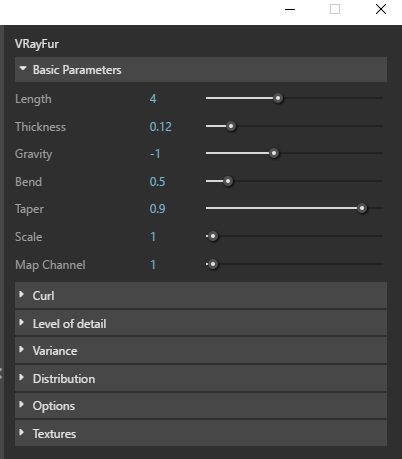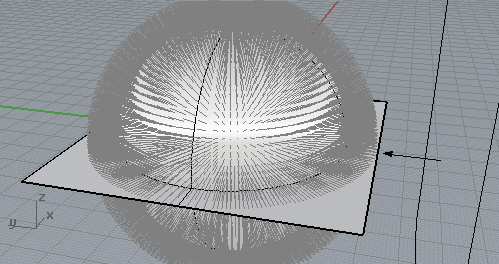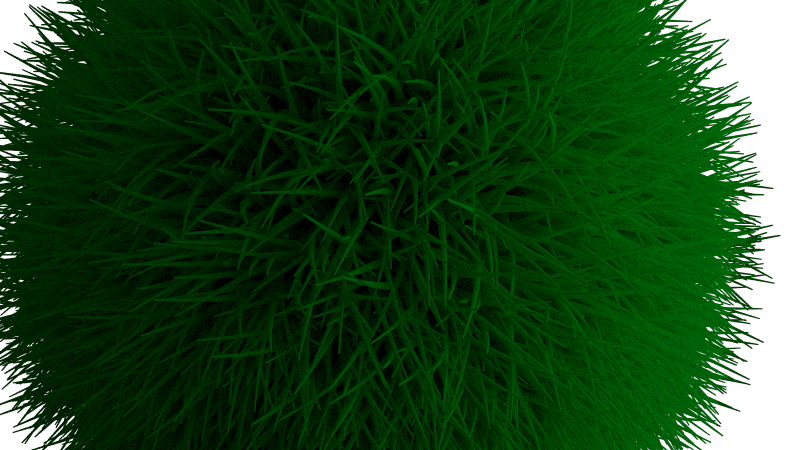TAPESTRY: The Art of Representation and Abstraction
Procedural Geometry
Making Geometry at Render-time
Each time you produce a rendering in V-Ray, Rhino has to pass over a bunch of information specifying the appropriate render-mesh data, textures, lights and so on. The time it takes to do this depends on the amount of geometry. Modeling really complicated geometry which is not all the same, such as grass, fur, etc., is challenging as well. In much the same way that bump and displacement maps facilitate modeling and rendering of surface texture, procedural geometry such as V-Ray 3's "fur" is therefore attractive. Given a piece of Rhino model geometry and a handful of parameters, the software can compute the complex fur/grass at render time.

VRay fur is associated with a piece of Rhino geometry using the "fur" option in the "V-Ray Objects" tab in the Rhino modeling window. Additional parameters are set using the V-Ray Asset Editor's "Objects" tab, selecting the "Fur Object" from the list, and opening the "VRayFur" details panel off to the right side, and setting the appropriate parameter.

The fur-clad object is then given a different Rhino proxy.

When rendered, the fur geometry is created and displayed.

Last updated: November, 2017
